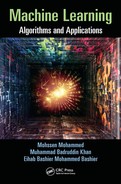Introduction
Since their evolution, humans have been using many types of tools to accomplish various tasks. The creativity of the human brain led to the invention of different machines. These machines made the human life easy by enabling people to meet various life needs, including travelling, industries, constructions, and computing.
Despite rapid developments in the machine industry, intelligence has remained the fundamental difference between humans and machines in performing their tasks. A human uses his or her senses to gather information from the surrounding atmosphere; the human brain works to analyze that information and takes suitable decisions accordingly. Machines, in contrast, are not intelligent by nature. A machine does not have the ability to analyze data and take decisions. For example, a machine is not expected to understand the story of Harry Potter, jump over a hole in the street, or interact with other machines through a common language.
The era of intelligent machines started in the mid-twentieth century when Alan Turing thought whether it is possible for machines to think. Since then, the artificial intelligence (AI) branch of computer science has developed rapidly. Humans have had the dreams to create machines that have the same level of intelligence as humans. Many science fiction movies have expressed these dreams, such as Artificial Intelligence; The Matrix; The Terminator; I, Robot; and Star Wars.
The history of AI started in the year 1943 when Waren McCulloch and Walter Pitts introduced the first neural network model. Alan Turing introduced the next noticeable work in the development of the AI in 1950 when he asked his famous question: can machines think? He introduced the B-type neural networks and also the concept of test of intelligence. In 1955, Oliver Selfridge proposed the use of computers for pattern recognition.
In 1956, John McCarthy, Marvin Minsky, Nathan Rochester of IBM, and Claude Shannon organized the first summer AI conference at Dartmouth College, the United States. In the second Dartmouth conference, the term artificial intelligence was used for the first time. The term cognitive science originated in 1956, during a symposium in information science at the MIT, the United States.
Rosenblatt invented the first perceptron in 1957. Then in 1959, John McCarthy invented the LISP programming language. David Hubel and Torsten Wiesel proposed the use of neural networks for the computer vision in 1962. Joseph Weizenbaum developed the first expert system Eliza that could diagnose a disease from its symptoms. The National Research Council (NRC) of the United States founded the Automatic Language Processing Advisory Committee (ALPAC) in 1964 to advance the research in the natural language processing. But after many years, the two organizations terminated the research because of the high expenses and low progress.
Marvin Minsky and Seymour Papert published their book Perceptrons in 1969, in which they demonstrated the limitations of neural networks. As a result, organizations stopped funding research on neural networks. The period from 1969 to 1979 witnessed a growth in the research of knowledge-based systems. The developed programs Dendral and Mycin are examples of this research. In 1979, Paul Werbos proposed the first efficient neural network model with backpropagation. However, in 1986, David Rumelhart, Geoffrey Hinton, and Ronald Williams discovered a method that allowed a network to learn to discriminate between nonlinear separable classes, and they named it backpropagation.
In 1987, Terrence Sejnowski and Charles Rosenberg developed an artificial neural network NETTalk for speech recognition. In 1987, John H. Holland and Arthur W. Burks invented an adapted computing system that is capable of learning. In fact, the development of the theory and application of genetic algorithms was inspired by the book Adaptation in Neural and Artificial Systems, written by Holland in 1975. In 1989, Dean Pomerleau proposed ALVINN (autonomous land vehicle in a neural network), which was a three-layer neural network designed for the task of the road following.
In the year 1997, the Deep Blue chess machine, designed by IBM, defeated Garry Kasparov, the world chess champion. In 2011, Watson, a computer developed by IBM, defeated Brad Rutter and Ken Jennings, the champions of the television game show Jeopardy!
The period from 1997 to the present witnessed rapid developments in reinforcement learning, natural language processing, emotional understanding, computer vision, and computer hearing.
The current research in machine learning focuses on computer vision, hearing, natural languages processing, image processing and pattern recognition, cognitive computing, knowledge representation, and so on. These research trends aim to provide machines with the abilities of gathering data through senses similar to the human senses and then processing the gathered data by using the computational intelligence tools and machine learning methods to conduct predictions and making decisions at the same level as humans.
The term machine learning means to enable machines to learn without programming them explicitly. There are four general machine learning methods: (1) supervised, (2) unsupervised, (3) semi-supervised, and (4) reinforcement learning methods. The objectives of machine learning are to enable machines to make predictions, perform clustering, extract association rules, or make decisions from a given dataset.
This book focuses on the supervised and unsupervised machine learning techniques. We provide a set of MATLAB programs to implement the various algorithms that are discussed in the chapters.
